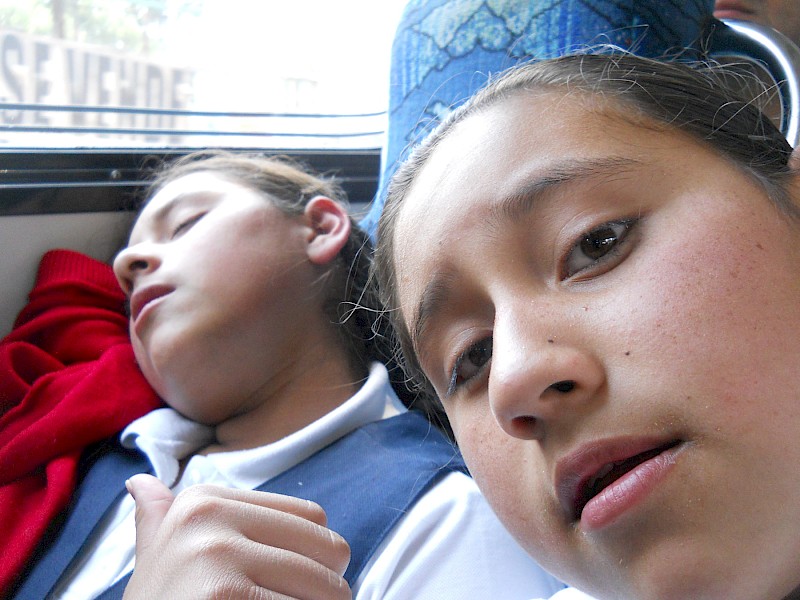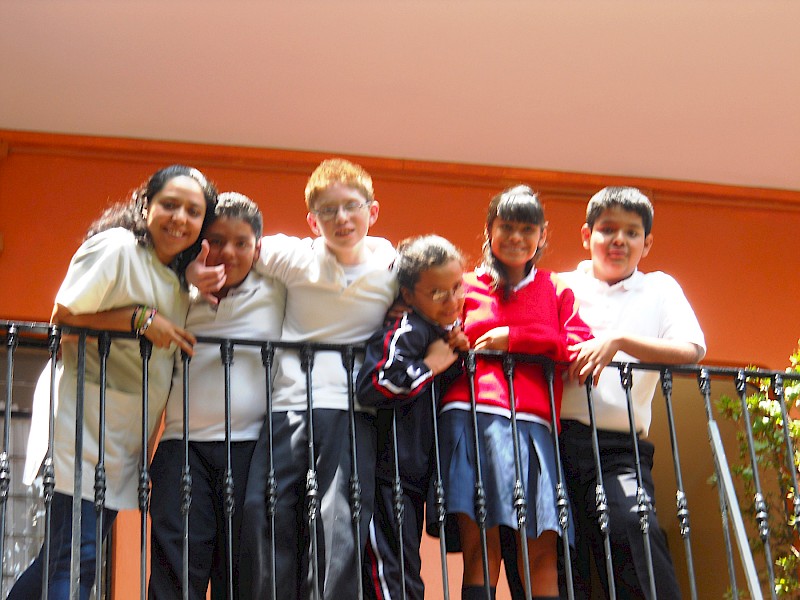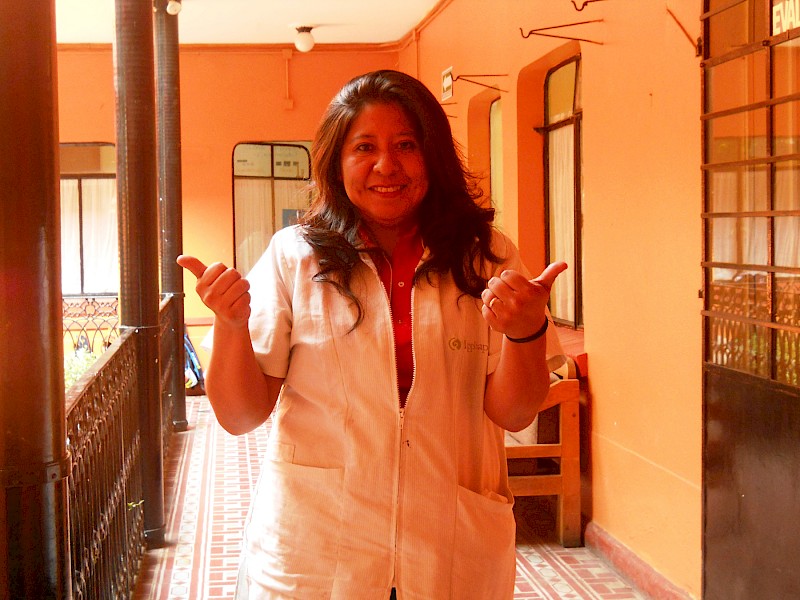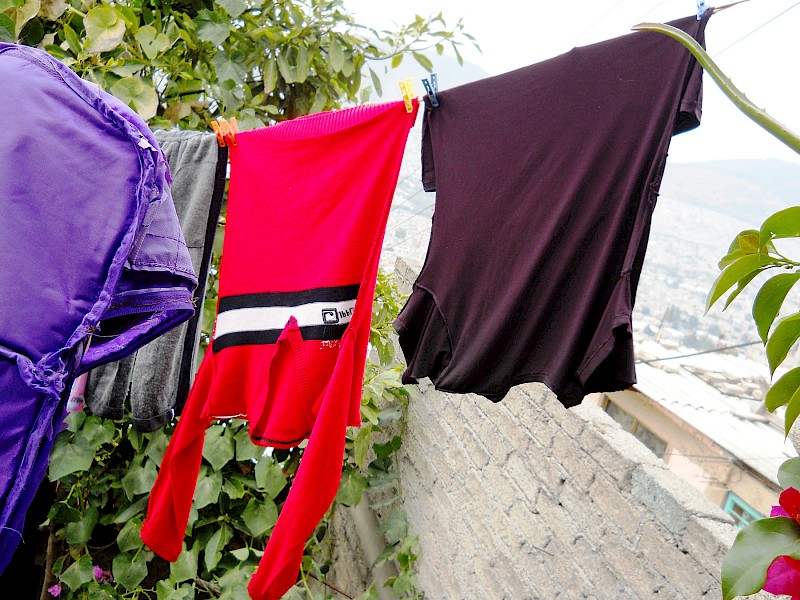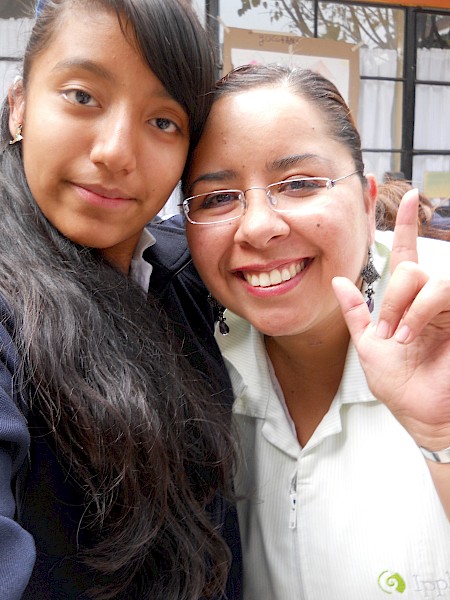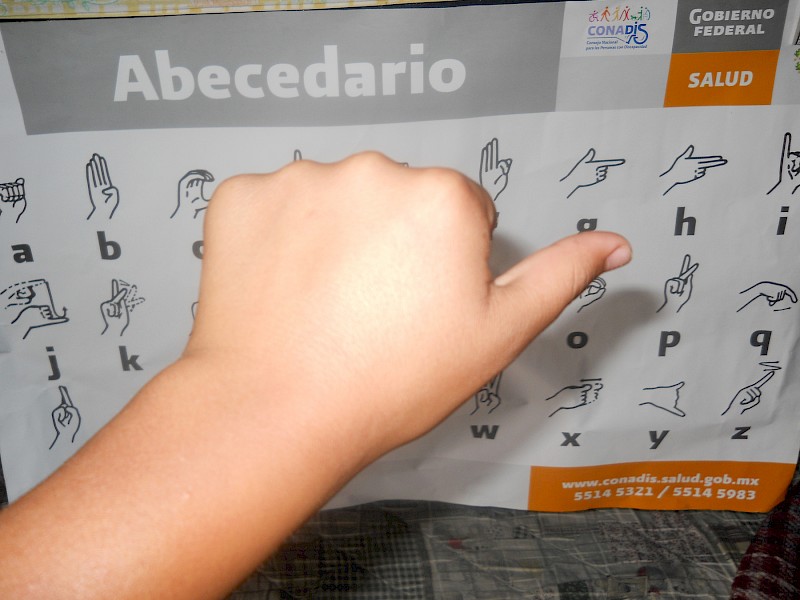Proyecto Fotovoz
The everyday lives of young people attending Instituto Pedagógico para Problemas de Lenguaje in Mexico City
—
Like the vast majority of Mexican young people who are deaf, almost all of my sixth-grade research participants were born into hearing families. They could not fully access the spoken languages used by their hearing families and mainstream society. This collaborative photovoice project offered an alternative medium for communication in a study about seeking treatment, language socialization, and identity. Young people’s images brought into focus particular aspects of their everyday, lived experience, which served as starting points for dialogue between the participants and me, usually through sign language interpretation. Each week, during our afternoon photovoice workshops, participants discussed the photos they had taken in response to particular themes chosen by the researcher. Some of these images were later presented at a community exposition called Proyecto Fotovoz (Project Photovoice). Here, I present images from two of the themes we explored: ‘A Day in My Life’ and ‘School and Learning’.
A Day in My Life
The theme ‘A Day in My Life’ invited young people to document their daily activities through photographs. María Isabel and Lupita were identical twins who, like many of their peers, used public transportation to traverse Mexico City in order to attend Instituto Pedagógico para Problemas de Lenguaje (Pedagogical Institute for Language Problems, IPPLIAP), a sign language-based primary school located in the center of the urban capital.
(click on images to view as slideshow)
Lupita’s clock in ‘Temprano en la mañana/Early in the Morning’ draws attention to the time at which the twins awoke each day in order to secure seats on the first bus departing from their semi-rural neighborhood. María Isabel’s photo, “La calle de mi casa/My Street,” was taken around 19:00, the time at which the twins would typically be walking home at the end of the school day.
In total, the twins’ journey to and from school took nearly six hours. Their photos foreground the time commitments families make so that young people can attend IPPLIAP. They evoke the idea of peregrinación (pilgrimage) – a word that the twins’ mother used to describe her quest for information and assistance when she discovered her daughters’ deafness.
A number of Lupita and María Isabel’s images highlight the extent to which their daily, six-hour commute forced aspects of their private lives into public spaces.
While the three of them traveled together on public transportation, their mother would arrange their long hair into thick braids. The bus and the metro were also places where the twins slept and ate meals.
School and learning
The theme ‘School and Learning’ invited young people to explore the connection between learning, language, and identity at school [note 1]. The images they produced highlight the critical importance of visual language at IPPLIAP. Young people and their families frequently encounter medical practitioners who strongly recommend against the use of sign language, and the importance of community for young people who are deaf is not widely recognized in Mexico City. Sign language instruction is neither mandated nor adequately supported by Mexico’s public education sector. In fact, IPPLIAP offers the only nationally recognized, sign language-based primary education in all of Mexico.
Ricardo titled this photo ‘Togetherness at IPPLIAP’. It captures valued feelings of community at school, where the opportunity to socialize among other young people who are deaf is crucial for sign language developemnt. When discussing the images they produced around this theme, Ricardo and other young people recalled the isolation and frustration they had experienced in their former schools. For most participants, their first encounters with sign language coincided with their enrollment at IPPLIAP.
Young people’s photos illustrate the unity and belonging made possible through shared language. Ángel Omar staged this photo with his teacher, Fabus, who signed ENTENDEMOS (we understand) [note 2] , which is also the title of his photo. He explained, ‘With sign language we understand – it’s our langauge. Using signs we can express ourselves’.
Isabel explained that her photo demonstrates her cariño (affection) for her teacher Marcela. The signing community of practice at IPPLIAP included deaf teachers, deaf peers, and family members. The employment of deaf professionals in Mexico’s public education sector is quite rare, but IPPLIAP is an exception. During my research, all faculty used sign language, and half of IPPLIAP’s teachers were deaf.
Bladimir photographed his school uniform hung out to dry and explained the title of his photo ‘Aprendiendo, apoyando y escribiendo/Learning, Supporting and Writing’. Bladimir said his title reflects his most salient school experiences, especially the support he felt from the signing community at IPPLIAP. APOYO (support) was a theme that emerged frequently among young people in reference to their experiences at IPPLIAP.
Family members said the commitment to send their children to IPPLIAP came at a price. However, they also said such sacrifices were worthwhile, because they wanted their children to attend school with other young people who are deaf, learn sign language, and experience the community and support many of these photographs convey. The positive role of IPPLIAP in young people’s lives was reflected in the community exposition we held at the end of this project. Proyecto Fotovoz was displayed at an IPPLIAP-sponsored national convention for Mexican educators of the deaf and at the participants’ graduation from IPPLIAP. This event mobilized young people’s emic knowledge about deafness and provided a counter-narrative about sign language that they felt was deficient in Mexico.
About the author
Anne E. Pfister has a PhD in applied anthropology from the University of South Florida. Pfister’s dissertation research utilized visual methods, including photovoice, to engage deaf youth participants as co-researchers to explore identity and language socialization. Pfister integrates the analytical lens of biocultural medical anthropology with sociocultural linguistic theory to examine the experiences of deaf youth and their families in Mexico City, Mexico. This research extends Pfister’s involvement in the Mexican deaf community with whom she has been associated for over eight years.
Endnotes
1 Back
These photos also appeared on Recycled Minds: (www.recycledminds.com/2013/09/Proyecto.Fotovoz.Pfister.html)
2 Back
I follow American conventional standards, using all capital letters to denote glosses, which are words in the corresponding spoken language that closely match the referenced sign.


